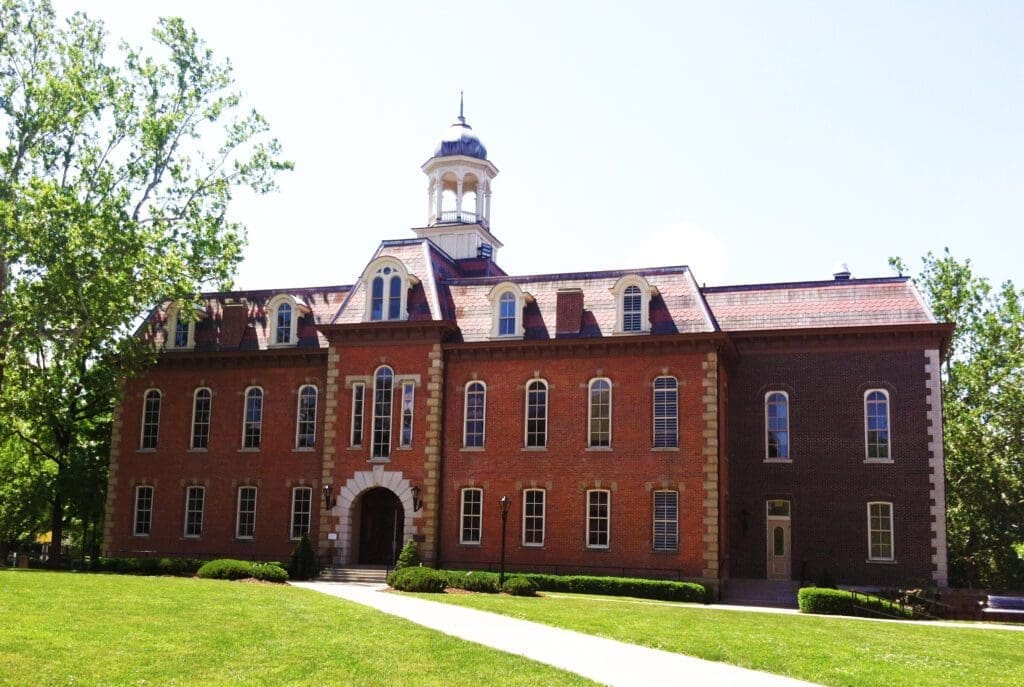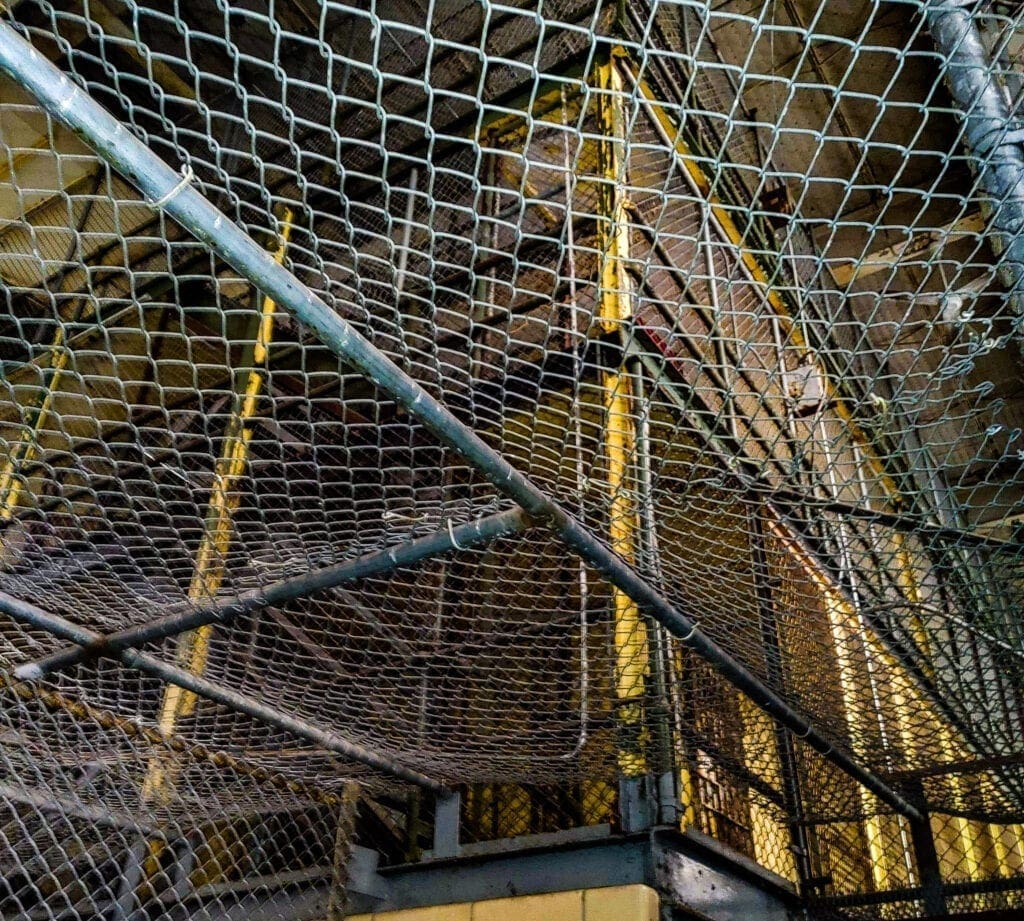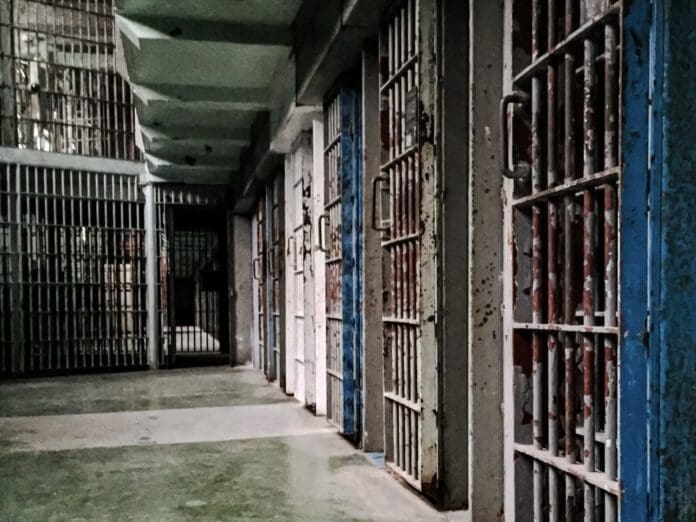The history of the West Virginia Penitentiary is both tantalizing and surreal. It was one of the most violent penal institutions in the United States. With such a wide array of stories from the thousands of inmates that resided at 818 Jefferson Avenue, it is no wonder that sometimes these stories were embellished to make history seem more sinister.
While I was leading tours at the penitentiary, guests often told fascinating anecdotes which they believed to be true. Many times, I listened and nodded and asked for their documentation. Failing to provide any, most people stuttered and stammered, “I just always heard that” or my favorite reply was, “Everybody knows that happened.”
At the beginning of one tour, a man vociferously spoke up, “My dad worked at the pen and during the riot, he saw chopped off heads rolling down the main hallway.” I presumed he was talking about the 1986 riot so I pressed him for more details. As he spun an elaborate tale, I inquired if his father was still alive as I wanted to speak to him about his experience.
Fortunately, his father was alive and after receiving his information, I contacted him. I told him of the story his son told and he interrupted me, “He’s an idiot. I worked at Huttonsville. I’ve never even been to Moundsville. That never happened.” I thanked him for this time as this was another busted myth. Brutal acts of violence did occur within the walls during the riot but no heads rolled down the 98 corridor.
In this three-part series, we will examine three well-known, and still repeated, myths of the West Virginia Penitentiary. The facts and documentation will be provided so the truth prevails. The three myths are:
- ‘Did Moundsville have a choice between the penitentiary and West Virginia University?’
- ‘Were people hanged in the North Wagon Gate?’,
- And finally, ‘Did convicted murderer Ronald Williams kill West Virginia State Trooper Philip Kesner?’

A Choice Was Made, But …
The first myth revolves around the location of the penitentiary. Did the City of Moundsville have the choice of the prison or the University? When I first arrived in Moundsville, I quickly heard this myth and was intrigued. I spoke to a long-time resident who affirmed it and I asked why Moundsville would choose a prison instead of an institution of higher learning? His reply made me laugh, “We wanted the prison because it would be better for the wild ones to be locked up instead of the wild ones running the street.”
West Virginia became a state during the Civil War, or as many Southerners still reference, the War of Northern Aggression on June 20, 1863. The first governor was Arthur Boreman and he advocated for a state prison to be built. At that time, the 55 counties that seceded from Virginia housed lawbreakers in their respective counties.
There was widespread resistance against one centralized penal institution until an event took place in Wheeling, then the capital of West Virginia. Nine inmates escaped from the Ohio County Jail in Wheeling and were never captured. This gave Governor Boreman the justification he sought for a state prison.
According to the Wheeling Daily Intelligencer, on January 17, 1866, Governor Boreman publicly called to build a state penitentiary to house those who broke the laws of the Mountain State. Even though there was still opposition to the idea, the fact that the escapees from the Ohio County Jail were never captured caused people to rethink their position.
The Wheeling Intelligencer recorded on January 18, 1866, Mr. Hornbrook offered a resolution to be brought to the Committee on Humane and Criminal Institutions. The resolution began the process to procure a penitentiary with two outstanding questions. The first question was of the location of the new prison and the second was how would the prison be run?
In West Virginia, there are two legislative political branches, the House of Delegates and the Senate. On February 13, 1866, House Bill 57 was presented to the House of Delegates and they voted to approve a state prison and its location. There were 51 votes in the House where to place the new prison and it split among four cities: Charlestown, Grafton, Moundsville, and Wheeling.
Moundsville received 26 votes, Wheeling 19 votes, Charleston 4 votes, and Grafton 2 votes. (Wheeling Daily Intelligencer, February 13, 1866.) But not everyone was happy about the vote as someone expressed their disapproval in the February 14, 1866 edition of the Wheeling Daily Intelligencer, “We desire to put ourselves on the record against so great a wrong upon the people of the state as the location of the penitentiary at Moundsville will be.”
When the Senate received House Bill 57, Mr. Burley made a motion to have a test vote concerning the bill but particularly the choice of Moundsville. Mr. Peck agreed to a state prison but did not like the proposed location. On February 15, 1866, Mr. Peck brought forth an amendment to accept the prison but strike Moundsville and have the prison in Wheeling. There were four yes votes and 13 no votes, thus the prison remained to be built in Moundsville.

The House Crime Constructed
The February 17, 1866, Wheeling Daily Intelligencer reported House Bill 57 was approved by the Senate unanimously on February 16. On April 11, 1866, Reverend Trainer of Moundville promised to give the state ten acres of land for the new facility. The Wheeling Daily Register of May 10, 1866, wrote the people of Moundsville agreed to donate the ten acres of land and a celebration was held and the Governor visited. The city of Moundsville donated the land but they did not have a choice concerning the location of the prison.
An article in the Wheeling Daily Register on September 11, 1866 stated, “Work on the state pen at Moundsville is progressing finely. There is now a large quantity of stone on the ground and some fifteen to twenty gentlemen, who wear very nice striped clothes, are busily engaged at the work.”
With the location chosen and the work started, the remaining question was how would the prison be run? There were two predominant penal styles in the United States at that time, the Auburn and Pennsylvania systems.
The Pennsylvania system was based on complete solitary confinement. At no point did the inmates congregate together. The inmates worked but did not have contact with each other. One challenge of this system is it requires many more correctional officers. West Virginia Penitentiary attempted to combine aspects of each system.
The history of West Virginia University is interesting as well. It was created under the Morrill Land-Grant Act of 1862. This statute called for the creation of colleges and was funded by the sales of federally owned land. While the objective of creating institutions of higher learning is admirable, much of the land sold had been taken from Native American tribes.
West Virginia University website, www.honors.wvu.edu, acknowledges that the school “resides on land that includes the ancestral territories of the Shawnee, Lenape (also known as the Delaware), the Cherokee, the Haudenosaunee (also known as the Iroquois Six Nations, including the Seneca, Cayuga, Onondaga, Oneida, Mohawk, and Tuscarora), and many other Indigenous peoples.”
The myth of the people of Moundsville having the choice between a prison or university simply is not true. The legend was passed down from generation to generation but there are numerous historical records to disprove its validity. The conception of West Virginia University started before West Virginia became a state.
While the people of Moundsville did provide the ground for the West Virginia Penitentiary, its location was chosen by legislation of the political body of a newly formed state.


